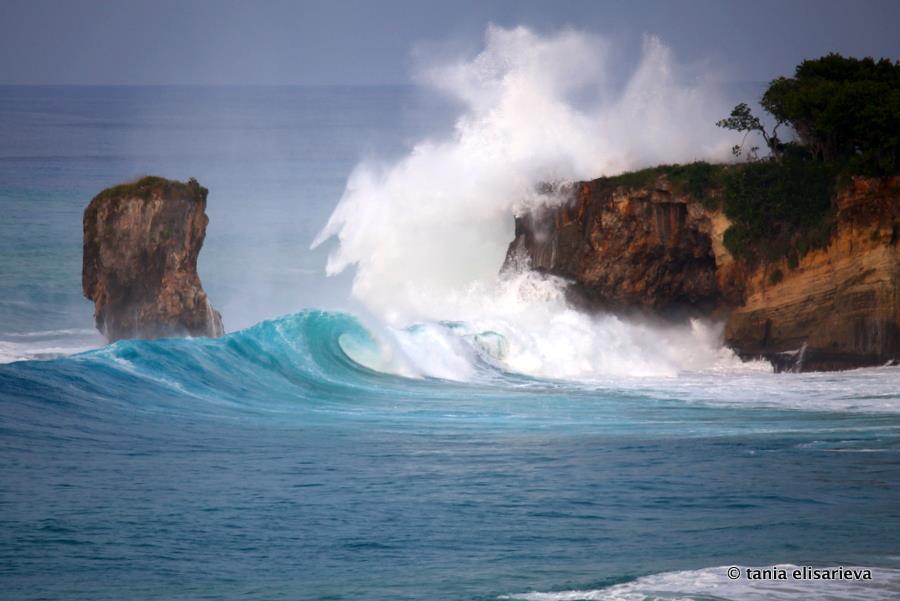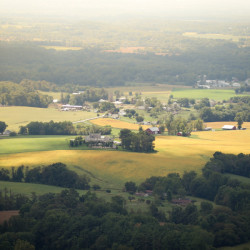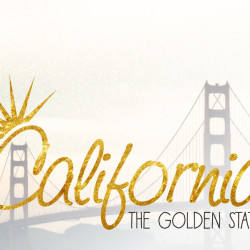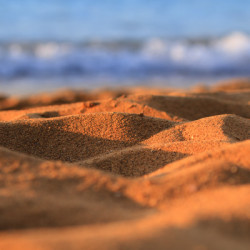I thought I was just learning to Surf… turns out I was learning how to live.
This series illustrate 10 life lessons I learned form surfing.
Being Oblivious to Your Surroundings Gets you Nowhere Fast
Being aware of your surroundings is an important life lesson, and is especially useful for travellers, and often trusting your intuition is a good first step. But what about when you’ve already gotten yourself into trouble by being oblivious?
Being Caught in Rip Tides
I don’t think I’ll ever learn to turn down opportunities that are beyond my skill level. Not in surfing, not in anything. This is NOT one of the life lessons I learned from surfing.
So, one day in late October last year, during the swell from hurricane Sandy, 4 friends and I decide to go for a little surf trip to Preciosa, a break just past Playa Grande, on the North Shore of the Dominican Republic.
From the top of the cliff it looked like perfect 6-8 foot swell. Manageable and beautiful.
So we head down and start paddling out.
Actually, it was 12 foot swell or so.
The waves always look smaller form the beach.
This is way above my skill level. (again) I have no idea how to drop in on 12 foot waves. I’m trying, like an idiot, but (probably thankfully) keep getting stuck on the lip.
I don’t have the balls to get in deep where the power is–as Eric made sure to point out to me–so I’m catching nothing.
Plus, honestly, I’m more worried about being behind the break when the set comes than dropping in successfully, because I’m not too excited about the hold-downs on 12 foot waves.
I barely make a few sets.
Just feeling yourself lift up and down with twelve foot swell is impressive, watching that wave crash right behind you; I really don’t need to know what it’s like to tumble in that right now.
Now I’d like to clarify that this is exhilarating, not scary.
Being face-to-face with the jaw-dropping power and monumental scale of nature is priceless.
The whole thing is beautiful, I catch no waves, but I watch Eric drop in on a few, like a boss.
Gabriel was holding his own as well, until he tried to duck dive one of the waves. The wave was having none of that. It grabbed his board and threw it back at his head, which dented the board as if a coconut had fallen on it from 30 feet overhead.
He shook it off, but we decided to go back in shortly after that… at this point we had been in the water for a couple hours, if not more, so we start paddling back in.
(well him and a friend do… I thought I was staying for more until a set let me know it was time to leave by dragging me back 40 feet in one breath, so I caught up to them real quick)
if you don’t look around, you might be unaware of obvious danger
We’re paddling back, trying to make it to one side of the beach for a long two minutes or so.
At first I don’t really look up. I’m giving her all I got to get out of here faster.
We’re not in a spot where the sets are likely to hit us, but I don’t want to test that theory and end up smashing against the rocks.
I paddle for a long time and something in me tells me I’m not making much progress. (back to that intuition thing.)
The paddle out felt a lot easier than this paddle back in.
If you don’t seem to be getting ahead, you might want to look around.
Finally I have the brilliant idea to check on my progress. I know, I’m a genius.
So I look to my right, and I note that the boat carcass that I noticed when I first started paddling is staying exactly to my right, no matter how hard I paddle.
“uh, guys… I don’t think we’re moving very much!”
Gabriel suggests that we give it more power.
We do, to no avail.
Then I remember Costa Rica. It’s another story for another day, but Costa Rica is where I learned about rip-tides.
Over there, it was just some regular rip tides from the water draining back out of the rather open bay… but here we have a much more closed bay, and hurricane swell.
I look around and realize the water around us is many shades more brown than where we had been surfing.
Lightbulb moment.
We’re in a rip. A GIANT rip. as in, this whole side of the double-horseshoe bay is a rip.
The power of the waves we just experienced trying to push us back to shore needs to empty back out to the open sea, and we’re right in the middle of that channel.
There’s NO WAY in hell we’re going anywhere paddling where we are now, no matter how hard we paddle.
Once you’ve identified the issue, it’s usually easy to fix.
Easy is a relative term, but now that we are aware of our surroundings, more specifically that we’re in the middle of a ginormous rip tide, it’s obvious we need to execute the back up plan.
Back up plan? What back up plan?
We stop paddling and without lifting a finger start flowing back out to the line-up at a high speed; fast enough to make me laugh out loud at our trying to overpower that surge.
The back-up plan isn’t a very attractive one. Since the right side of the beach isn’t an option, we have to get out from the left….
To clear the rocky cliff, that means we have to paddle behind the break, against current, but at least not against the rip, and time our exit between sets to hopefully have enough time to paddle out without getting rocked by the hold-downs of our twelve foot waves.
We’re already exhausted. This isn’t going to be fun, but at least it’s POSSIBLE!
So we do.
I don’t time my exit very well–surprise, surprise–but manage to somehow catch a broken wave back in, riding it on my belly, from inside the foam…
can’t see,
can’t breathe.
When I hit the sand I throw my board down ahead of me and drop to my knees kissing solid ground.
A man and his two sons had been watching from shore. they greeted our arrival with claps, which is really funny, because I’d caught no waves that session.
Yes I’m glad my near-death experience entertained you. No really, I am. =)
In Conclusion:
Because we chose our exit strategy without paying attention to our surroundings, we added unnecessary exertion to an already dangerous situation.
That day I learned that being oblivious to your surroundings gets you nowhere fast.
To move ahead in life you need to maximize each stroke.
To prevent futile use of my energy, I learned to look at the road ahead and make sure I’ve identified the road blocks and chosen the best path.
I learned that if I don’t feel like I’m moving forward, maybe it’s because I’m not, (I know, novel idea!) and I should reassess my chosen path, identify the issues and find the most effective ways of rectifying the situation.
Being aware of my surroundings means I can identify the flow and go with it, instead of against it. We’ll go into that more, and even further, on next week’s episode of 10 life lessons I learned from surfing.
PHOTO CREDIT: Tania Elisarieva took that epic shot of Preciosa later in the day after we had already left. For reference, the cliff the wave is crashing against is at least 50 feet high.










hi guys super interesting blog and article about lessons learnt with surfing! will keep following! you may also check more info about the world of surf’inn travel at http://www.surfinn.travel!
best
joao
Thanks for the kind words. Nice site.